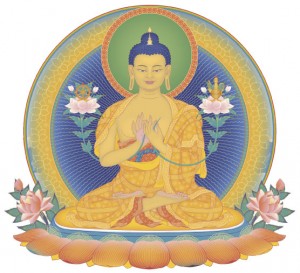Celtic Spirituality - Buddhists, Christians and Druids in ancient Britain and Ireland |
|
| In 'The Celtic Alternative, a Reminder of
the Christianity We Lost' [1], Shirley Toulson
argues that the religion that flourished in the islands of Britain during the Dark Ages
had more in common with Buddhism than with the institutional Christianity of the West.
This was the religion taught by the Celtic Church, which, over the early centuries of the
Christian era, gradually moved into confrontation with Rome - a confrontation which
officially ended with Rome's victory at the Council of Whitby in 664 AD, though some
elements of Celtic Christianity persisted in remote areas long after this. Shirley Toulson examines the history, teachings and customs of the Celtic church, linking them culturally and spiritually with the religion of the Druids which was predominant in Britain and Ireland during its early years. However, the book does not satisfactorily explain the similarities between Buddhism and Celtic spirituality, beyond seemingly coincidental beliefs about the pre-existence of the soul prior to conception, as held by such early Christians as Origen Adamantius and Evagrius Ponticus - beliefs which happen to be in accordance with Buddhist teachings on rebirth [2]. But examination of other sources suggests that there may be two fundamental historical reasons why Celtic Christianity was so similar to Buddhism. These are discussed below: (i) Lost Years - The original form of Christianity was heavily influenced by Buddhism. Jesus Himself may have journeyed to India. This is known as the 'Lost Years of Jesus' hypothesis' [3]. It was only when Christianity was adopted as the official religion of the late Roman Empire that it gradually moved away from its Buddhist origins and became inflexible, intolerant and dogmatic. (ii) Celtic Buddhism - Buddhism was already established in pre-Christian Britain in the form of Druidism. According to this hypothesis the later Druids had been influenced by teachings of the Buddhist missionaries sent westwards by the Indian emperor Ashoka. The two hypotheses - 'Lost Years' and 'Celtic Buddhism' - are not mutually exclusive, and in fact could be synergistic. Certainly the Celtic Church represented a very pure and authentic version of Christ's teachings, as it had been established at Glastonbury by St Joseph of Arimathea, probably before 50 AD. As the 'Lost Years Hypothesis' is well represented on the net I will not discuss it beyond providing links [3]. However the 'Celtic Buddhism' approach seems to have been largely forgotten since the publication of Buddhism in Pre-Christian Britain [4] in 1928. Celtic Buddhism
Notes and References [1] Toulson, Shirley (1992) The Celtic Alternative, a Reminder of the Christianity We Lost, publ Rider/Random House, London ISBN 0-7126-1478-8 [2] It isn't just early Christians and Buddhists who believed in rebirth. For example Wordsworth was clearly of that opinion:
Belief in rebirth or reincarnation was not finally declared heretical until AD 553, see http://www.selfgrowth.com/articles/sint.html Nevertheless, the issue remains controversial,
with the Anglican priest Geddes MacGregor (among others) regarding reincarnation as still
being compatible with Christian teachings:
[3] The 'Lost Years of Jesus'
hypothesis is discussed on the following sites: [4] Mackenzie, Donald A. (1928), Buddhism in pre-Christian Britain, publ. Blackie and Son Limited Glasgow [5] ibid p 42 |
